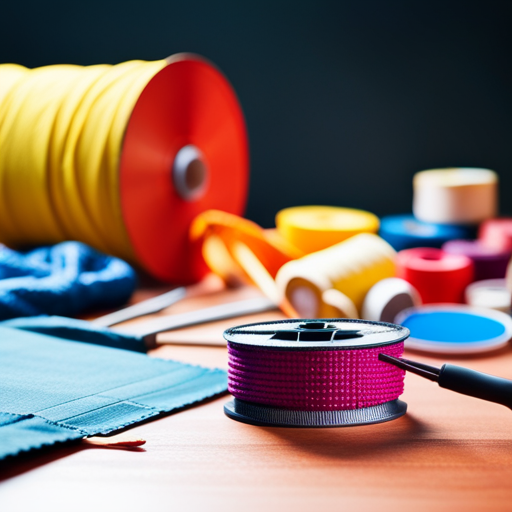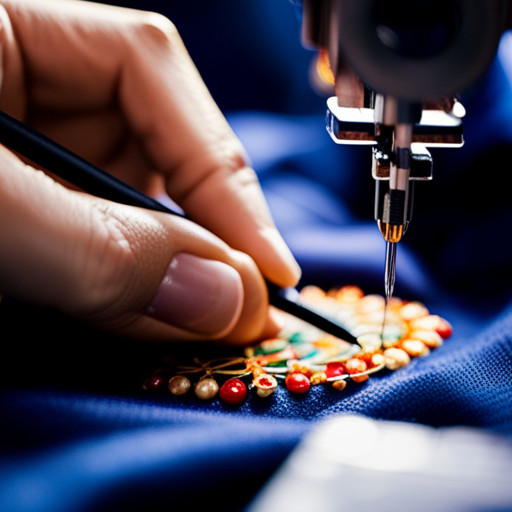Incorporating LED Lights Into Costumes

Like stars in the night sky, LED lights bring costumes to life with their mesmerizing glow.
In this article, we will explore the art of incorporating LED lights into costumes, from selecting the right lights to sewing them onto fabric and creating interactive effects.
Whether you’re a cosplayer, performer, or designer, this guide will illuminate the path to creating stunning and innovative LED-infused designs.
Choosing the Right LED Lights
Selecting the appropriate LED lights for costumes is crucial for achieving the desired visual impact and functionality. When choosing LED lights for costumes, considering color temperature is essential. Color temperature affects the mood and ambiance of the costume, and it’s important to select LED lights with the appropriate color temperature to convey the intended emotions or themes.
Additionally, durability options play a significant role in ensuring the longevity and reliability of the LED lights. Costumes often undergo movement and various environmental conditions, so opting for LED lights with robust durability options can prevent malfunctions and prolong the lifespan of the lights.
Furthermore, when considering durability options, factors such as water resistance, impact resistance, and overall build quality should be taken into account to ensure the LED lights can withstand the rigors of costume use.
Once the appropriate LED lights with the right color temperature and durability options are chosen, the next step is to seamlessly incorporate them into the costume by sewing LED lights onto fabric.
Sewing LED Lights Onto Fabric
When integrating LED lights into costumes, it is essential to seamlessly sew them onto fabric to ensure a secure and professional-looking installation. When selecting the fabric for sewing LED lights, it’s crucial to consider fabric compatibility. Fabrics such as cotton, felt, and neoprene are generally suitable for sewing LED lights due to their flexibility and durability. Before sewing, it’s important to test the fabric with a small sample of lights to ensure that the material does not interfere with the functioning of the LEDs.
To sew LED lights onto fabric, it’s recommended to use conductive thread or a thin, flexible wire to connect the lights. This ensures a reliable electrical connection while allowing the fabric to remain pliable. When sewing, ensure that the stitches are tight and secure to prevent the lights from coming loose during movement. Additionally, reinforcing the connections with fabric glue can provide extra stability.
To maintain costumes with sewn LED lights, it’s advisable to hand wash them gently and let them air dry to prevent damage to the lights or electrical connections. Checking the connections periodically and repairing any loose stitches or damaged wires will help prolong the life of the LED lights on the costume.
Incorporating LED Strips and Panels
To effectively incorporate LED strips and panels into costumes, it is essential to carefully consider the placement and arrangement of the lighting elements. Customizing colors and designing patterns are key aspects of creating visually stunning costumes with LED strips and panels. These lighting elements offer versatility in terms of color options and dynamic patterns, allowing for endless creative possibilities. The table below provides a glimpse of the potential effects that can be achieved through the customization of colors and patterns.
| Customization Options | Description | Example |
|---|---|---|
| Custom Colors | LED strips and panels can be programmed to display a wide range of colors, enabling the creation of vibrant and eye-catching costumes. | Illuminating a costume in a specific team or brand’s colors. |
| Dynamic Patterns | By designing patterns and sequences, LED strips and panels can be used to produce mesmerizing visual effects, adding depth and movement to the costume. | Creating a pulsating or twinkling pattern to enhance the overall aesthetic of the costume. |
Incorporating LED strips and panels into costumes allows for the creation of captivating and unique visual displays, enhancing the overall impact of the attire. Transitioning to the subsequent section, we will explore the fascinating realm of creating interactive LED effects.
Creating Interactive LED Effects
Implementing interactive LED effects into costumes enhances their visual appeal and captivates the audience with dynamic illuminations. Designing custom patterns allows for the creation of unique and eye-catching visual displays. By incorporating interactive programming, the LED lights can respond to movements or sound, adding an extra layer of engagement and interactivity to the costume. This enables performers to synchronize their movements with the LED effects, creating a mesmerizing and immersive experience for the audience.
Interactive LED effects also offer the opportunity to integrate sensor technologies, such as accelerometers or sound sensors, to trigger specific lighting sequences based on the wearer’s movements or the surrounding audio environment. This level of customization allows for a truly personalized and responsive visual performance, elevating the overall impact of the costume.
In addition to creating visually stunning effects, interactive LED programming can also serve functional purposes, such as enhancing safety by increasing visibility in low-light environments. As we delve into the technical aspects of powering and controlling LED lights, it’s essential to understand how these dynamic features can be seamlessly integrated into costume designs.
Powering and Controlling LED Lights
Upon integrating interactive LED effects into costumes, the process of powering and controlling the LED lights becomes a crucial aspect of the overall design. When it comes to powering options, costume designers have several choices. They can opt for traditional disposable batteries, rechargeable batteries, or even consider integrating the costume with a power source, such as a portable USB power bank. Each option comes with its own set of considerations, including cost, convenience, and environmental impact.
Additionally, remote control capabilities can offer greater flexibility and interactivity. By incorporating remote control systems, such as RF (radio frequency) or Bluetooth controllers, designers can enable performers to adjust the LED lighting effects wirelessly. This allows for real-time modifications during performances, enhancing the overall visual impact of the costumes.
Frequently Asked Questions
Can LED Lights Be Washed or Dry Cleaned Once Sewn Onto Fabric?
LED lights can be washed or dry cleaned once sewn onto fabric, but proper handling and care are crucial. Ensure the lights are securely attached and use gentle washing methods to maintain their durability and functionality.
Are There Any Safety Concerns When Using LED Lights in Costumes, Such as Overheating or Electrical Hazards?
When it comes to costume safety, incorporating LED technology requires diligent attention to potential hazards. Overheating and electrical hazards are primary concerns, necessitating proper insulation, heat dissipation, and regular safety checks.
What Are Some Creative Ways to Incorporate LED Lights Into Costumes for Different Types of Performances or Events?
Innovative designs and customizable effects can elevate costumes for various performances or events. Incorporating LED lights in creative ways can enhance visual impact, adding depth and vibrancy to costumes, and enabling captivating visual storytelling.
Can LED Lights Be Easily Removed and Reused in Different Costumes?
Reusing LED lights in costumes provides an opportunity for costume customization and flexibility. LED lights can be easily removed and reinstalled in different costumes, allowing for versatility and creativity in designing multiple outfits for various performances or events.
Are There Any Specific Regulations or Restrictions for Using LED Lights in Costumes for Certain Venues or Events?
Regulations and safety concerns regarding the use of LED lights in costumes at various venues or events are crucial. Compliance with local, state, and federal guidelines is essential to ensure the safety of performers and attendees.
Conclusion
In conclusion, incorporating LED lights into costumes requires careful consideration of the right type of lights to use, proper sewing techniques, and the use of LED strips and panels for more elaborate designs.
Creating interactive LED effects adds a dynamic element to costumes, while ensuring proper powering and control of the lights is essential for a successful outcome.
Overall, integrating LED lights into costumes offers endless creative possibilities for enhancing visual impact.

Rufus Whitver is a passionate costume artisan and the creative mind behind layuo.com. With a keen eye for detail and a flair for imaginative design, Rufus brings characters to life through the art of costume making. His expertise encompasses a wide range of styles, from historical recreations to fantastical creations. Through layuo.com, Rufus shares insights, tutorials, and a portfolio showcasing his exceptional craftsmanship, inspiring fellow enthusiasts to embark on their own journey into the world of stunning costumes.





